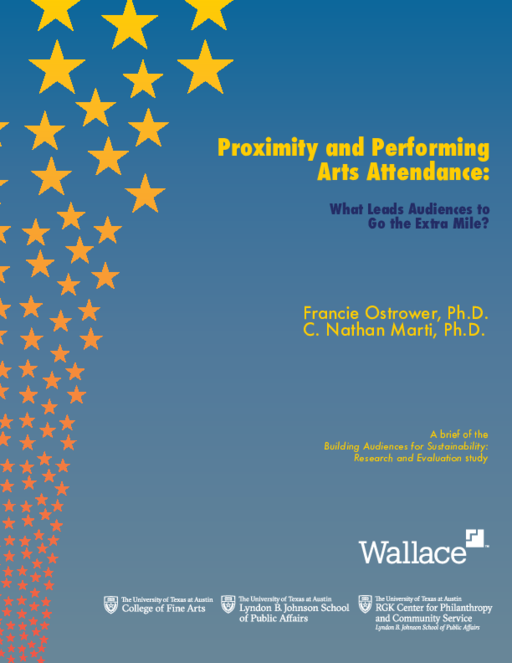- Author(s)
- Francie Ostrower, Ph.D. and C. Nathan Marti, Ph.D.
- Publisher(s)
- The University of Texas at Austin
Researchers compiled qualitative data on all 25 arts organizations participating in the BAS initiative, and quantitative data for a subset of 15, which are the focus of this brief. While neither the initiative nor the study focused on distance per se, the data offer a rich source of information to explore this aspect of audience building. The brief draws on main season ticketing data for the 2015 and 2019 seasons at the 15 organizations, comprising over 250,000 anonymized individual and household “bookers” (i.e., those who obtained tickets) for each season.1 The majority of bookers obtained tickets by buying them, though some obtained complimentary tickets.
Using these data, researchers examined whether distance (measured as the distance of the booker’s zip code from the zip code of the organization’s performance venue) was associated with the following:
Frequency of attendance (the number of productions the booker attended that season)
Organizational size (measured in annual operating expenses) attending a production
Sociodemographic characteristics of the organization’s surrounding locale (e.g., population density, percent of the population with a college degree, etc.) Researchers assessed whether there was a statistically significant relationship between each of these factors and audience distance. Then, researchers employed mixed models (a statistical approach) to take into account that the data was drawn from different organizations rather than from a single source.






